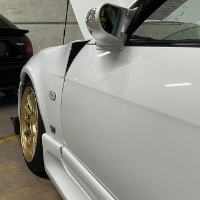Pics Of R34gtr Midnight Purple Colours I, Ii, Iii
Announcements
-
Similar Content
-
Latest Posts
-
Sounds like using one of those configs modern cars use where they turn off the whole headlight these days on the side that the indicator is flashing on.
-
Change the pump... Or you'll likely regreg it in 12 months time if it's clunky...
-
By Dose Pipe Sutututu · Posted
Convert to dual filament bulb FWIW, it will look odd - I dare say a bit dumb as it looks like your flasher relay has shit the bed. -
If the RB20 box in the car is a push clutch, then yes, you will need to deal with the pull clutch on the turbo box. You either buy a pull clutch and don't use the old one, or you do the things needed to convert the turbo box's clutch arrangement over to push. Which is a bit of a f**karound. "Making" a custom tailshaft is the easy part. But you will need to source the front clip yoke - the bit that goes into the output of the gearbox. These are not as easy to find. They are out there, but they don't grow on trees the way that they used to.
-








Recommended Posts
Create an account or sign in to comment
You need to be a member in order to leave a comment
Create an account
Sign up for a new account in our community. It's easy!
Register a new accountSign in
Already have an account? Sign in here.
Sign In Now